The German leather industry has been subject to a dramatic adjustment process recently and is not in an excellent suitable condition. It lost important customers due to emigration to low-wage countries. On the other hand, because of their small size, many companies were not willing or able to relocate large-scale production to cheaper locations. As a result, many companies lacked the opportunity to react flexibly to the industrial catching-up process in developing and emerging countries and the more stringent environmental regulations in Germany. 
The result was a severe downturn in leather production in Germany. The number of companies fell from 173 at the end of 1970 to 12 at the end of 2017. During the same period, the number of employees decreased from 13,337 to 2,022. Sales in 2017 amounted to around 433.5 million euros
The main reasons for the decline in the German leather industry
Significant competitive pressure from the catching-up process in developing countries. In the 1970s, developing countries set up their own leather industries, which have steadily gained market share. In addition to the well-known cost advantages such as low wages, there is also the fact that the leather industries in developing countries have direct access to very inexpensive raw materials (hides, skins). They have about 70 percent of all cattle and calves worldwide and produce more than 50 percent of all hides and skins. In order to safeguard domestic production, the developing countries introduced market access restrictions, particularly for skins, in the mid-1970s. Today, the leather industries in developing countries have grown so much that it is no longer sufficient to resort to one's own cattle hides and are dependent on imports of hides and skins. In many developing countries, the construction of their own factories has been promoted with subsidies. Under the robust competition from the developing countries, favored by meager purchase prices for raw materials, low wages, and state subsidies, German leather production came under enormous competitive pressure. Emigration of the German shoe industry and leather goods industry to low-wage countries. 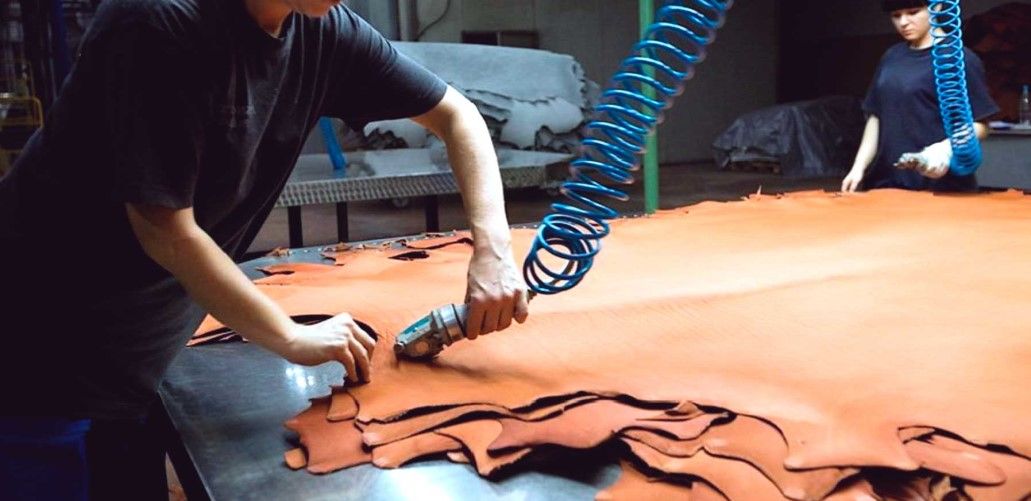 As a result, the German leather industry gradually lost significant customers with traditional supply connections High environmental standards in Germany. The leather industry is traditionally disproportionately involved in environmental pollution. Due to the constantly tightened environmental regulations in Germany, the environmental protection costs of the German leather industry have continued to rise. On average, for 1985 - 1992, the share of environmental costs in investments in leather production was the highest of all branches of the processing industry. As a result, the German leather producers were more burdened than their competitors in other countries. The leather industry had to compete against products from countries with little or no environmental costs, either because environmental protection regulations did not exist or were not consistently enforced ecological dumping. It resulted in a locational and competitive disadvantage for the leather industry in Germany, combined with high price pressure. The necessary environmental investments exceeded the financial possibilities of many companies already struggling to survive. The main focus of the closures was on the chrome tanners because of the production-related accumulation of environmentally harmful wastewater and sewage sludge containing chrome. The German leather industry has a medium-sized structure. It focuses primarily on the old federal states with a focus on Baden-Württemberg and Bavaria The companies in Germany have concentrated on the production of high-quality leather and currently produce around 8 million square meters of flat leather. The following individual items accounted for shares of this: 75 percent car and furniture leather, 15 percent shoe leather, and 10 percent leather for high-quality leather goods and equestrian sports articles.
As a result, the German leather industry gradually lost significant customers with traditional supply connections High environmental standards in Germany. The leather industry is traditionally disproportionately involved in environmental pollution. Due to the constantly tightened environmental regulations in Germany, the environmental protection costs of the German leather industry have continued to rise. On average, for 1985 - 1992, the share of environmental costs in investments in leather production was the highest of all branches of the processing industry. As a result, the German leather producers were more burdened than their competitors in other countries. The leather industry had to compete against products from countries with little or no environmental costs, either because environmental protection regulations did not exist or were not consistently enforced ecological dumping. It resulted in a locational and competitive disadvantage for the leather industry in Germany, combined with high price pressure. The necessary environmental investments exceeded the financial possibilities of many companies already struggling to survive. The main focus of the closures was on the chrome tanners because of the production-related accumulation of environmentally harmful wastewater and sewage sludge containing chrome. The German leather industry has a medium-sized structure. It focuses primarily on the old federal states with a focus on Baden-Württemberg and Bavaria The companies in Germany have concentrated on the production of high-quality leather and currently produce around 8 million square meters of flat leather. The following individual items accounted for shares of this: 75 percent car and furniture leather, 15 percent shoe leather, and 10 percent leather for high-quality leather goods and equestrian sports articles.  The German manufacturers must have direct access to cattle hides from Germany, Austria, and Switzerland, which are among the best in the world in terms of quality low pest infestation and excellent care of the animals. About half of the German leather companies are "full tanners," which means that the production process begins with the untreated skins and ends with the finished leather. At the other companies, production begins with the so-called wet blue the skins, freed from hair, muscle, and fat residues and subjected to first tanning, the chromium salts used to give the skins a blue hue. After the departure of essential leather processors e.g., the shoe industry, German leather production has become less critical. Leather imports and exports are disproportionately higher than domestic production. This is also a consequence of the high level of re-exports by the German shoe industry, which organizes its leather purchases via Germany, with large stocks being held here in central warehouses. In Europe, Germany is the third-largest leather-producing nation behind Italy and Spain.
The German manufacturers must have direct access to cattle hides from Germany, Austria, and Switzerland, which are among the best in the world in terms of quality low pest infestation and excellent care of the animals. About half of the German leather companies are "full tanners," which means that the production process begins with the untreated skins and ends with the finished leather. At the other companies, production begins with the so-called wet blue the skins, freed from hair, muscle, and fat residues and subjected to first tanning, the chromium salts used to give the skins a blue hue. After the departure of essential leather processors e.g., the shoe industry, German leather production has become less critical. Leather imports and exports are disproportionately higher than domestic production. This is also a consequence of the high level of re-exports by the German shoe industry, which organizes its leather purchases via Germany, with large stocks being held here in central warehouses. In Europe, Germany is the third-largest leather-producing nation behind Italy and Spain.
Economic development of the leather industry
Except for foreign trade, the German leather products industry mainly recorded growth rates in the first quarter of 2018. Compared to the previous year's result, sales increased by 3.3 percent to EUR 114.7 million. Production recorded an increase of 4.1 percent to 107.0 million euros. Within a year, the number of employees increased by 2.9 percent to 2,047, while the number of companies remained unchanged at 12. In the first quarter of 2018, foreign trade in leather showed the following development: Compared to the same period of the previous year, exports fell by 1.9 percent to around 171.6 million euros and imports by 10.7 percent to around 135.5 million euros. As a result, the export surplus increased by 56.3 percent to 36.1 million euros. 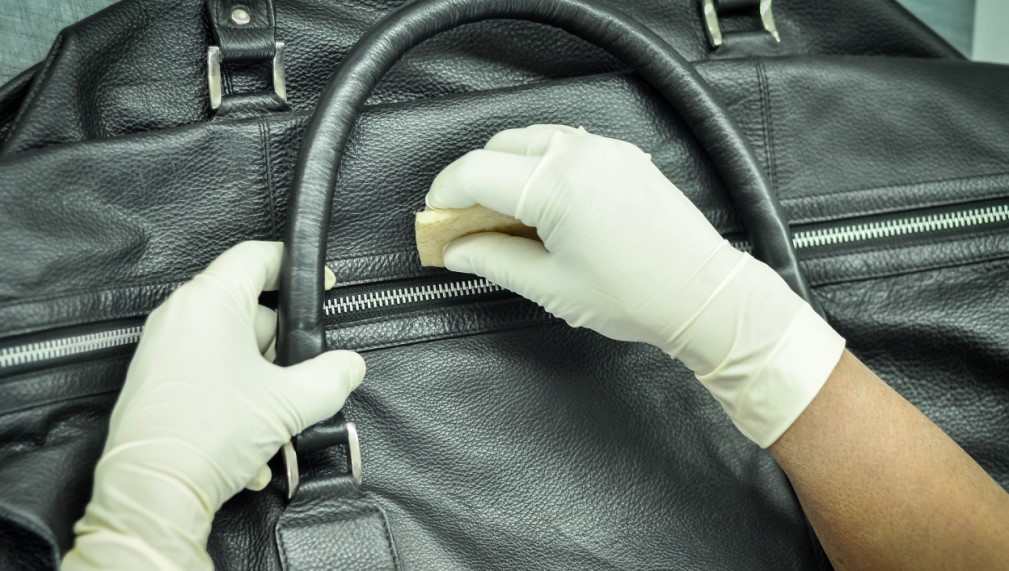
Statement of the global leather industry on leather alternatives
New materials are emerging in the fashion, design, and upholstery market for interiors in the transport sector (automotive, railway, etc.), intending to replace leather as the material of choice. It is usually done based on claimed sustainability improvements that are rarely substantiated. While the pursuit of sustainability is necessary, presenting leather, a durable, biodegradable material made from a renewable waste product from another industry, as unsustainable is unjustified and unfounded. Especially when it is juxtaposed with new materials mainly made of fossil fuel-based plastics. Globally, tanneries recover and upgrade at least eight million tons of raw hides and skins from the food sector every year. Without the leather industry and its upcycling activity, this leftover material would simply become waste and end up in landfills or incinerators. Destroying this waste instead of using it leads to the release of around five million tons of greenhouse gases 1. The recovery and recycling of this waste by the leather shoes industry thus reduces greenhouse gas emissions while creating a valuable and versatile product. Can any of these new materials do this? The answer is far from clear because, despite the extensive media coverage that supports each new launch, little or nothing is known about the performance and composition of these materials not to mention the sustainability of the associated production processes. A recent comparative analysis of eight of these new products and leathers 2 carried out by the German institute FILK has shown that the technical performance of these new materials and leathers have little in common. Leather was far superior to the alternatives studied in most relevant functional performance parameters, and none of the alternatives matched leather at all.  Additionally, the claimed sustainability of most of these new materials appeared to be severely compromised by the need for large amounts of synthetic materials such as polyurethane to try to match the functional performance of real leather. If the functional performances are inferior, if the composition is largely synthetic, and if nothing is known about the environmental impact of the manufacturing processes, is it really valid to make sustainability claims? Especially compared to leather The driving force behind this can largely be attributed to fashion marketing and its endless search for new and ever-improving sustainability claims. However, it is paradoxical to replace a durable, biodegradable, circular material like leather with materials that are largely synthetic. It also ignores the upcycling solution that leather manufacturing offers for a material that would otherwise end up as waste. There is enough room in the market for a variety of materials and the leather industry has no problem with competition as long as it is fair. However, she will not accept that on the one hand the image of leather is embraced and on the other hand the genuine leather article is denigrated in order to promote alternatives with questionable claims to performance and sustainability. Leather - stands for the high demand for sustainable production There are tanneries and the associated upstream and downstream areas in Germany and the EU. Only nobody can imagine that these companies are there. Images are shown in the media that have nothing to do with reality. A few large companies were hardly noticed out of the many tanneries that existed everywhere. As a result, fewer and fewer people worked in the tanning industry. The media, generally uninterested in good news, reported less and less about local tanneries and more about companies worldwide that were harmful to the environment and health. Leather is increasingly being discussed concerning animal welfare, chemical use, and working conditions.
Additionally, the claimed sustainability of most of these new materials appeared to be severely compromised by the need for large amounts of synthetic materials such as polyurethane to try to match the functional performance of real leather. If the functional performances are inferior, if the composition is largely synthetic, and if nothing is known about the environmental impact of the manufacturing processes, is it really valid to make sustainability claims? Especially compared to leather The driving force behind this can largely be attributed to fashion marketing and its endless search for new and ever-improving sustainability claims. However, it is paradoxical to replace a durable, biodegradable, circular material like leather with materials that are largely synthetic. It also ignores the upcycling solution that leather manufacturing offers for a material that would otherwise end up as waste. There is enough room in the market for a variety of materials and the leather industry has no problem with competition as long as it is fair. However, she will not accept that on the one hand the image of leather is embraced and on the other hand the genuine leather article is denigrated in order to promote alternatives with questionable claims to performance and sustainability. Leather - stands for the high demand for sustainable production There are tanneries and the associated upstream and downstream areas in Germany and the EU. Only nobody can imagine that these companies are there. Images are shown in the media that have nothing to do with reality. A few large companies were hardly noticed out of the many tanneries that existed everywhere. As a result, fewer and fewer people worked in the tanning industry. The media, generally uninterested in good news, reported less and less about local tanneries and more about companies worldwide that were harmful to the environment and health. Leather is increasingly being discussed concerning animal welfare, chemical use, and working conditions. 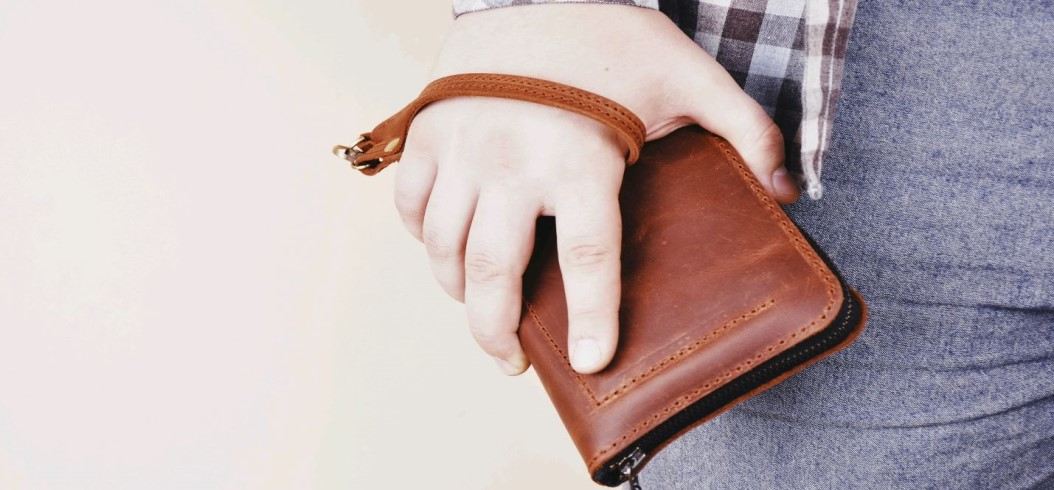 The tanners, who rarely sell directly to the consumer but to the shoe, furniture, car, leather goods, and fashion industry, do not find it easy to bring their "good deeds" to the consumer. Consumers have always held in high esteem leather, a natural product. For as long as humans have, hides and skins have been processed into the leather as renewable raw materials. The functions that the skin demonstrates on the animal, such as protection from heat and cold and protection of the organs from injuries, are also possessed when it has been processed into the leather—toughness with limited extensibility, high tear strength, and durability—not forgetting water vapor permeability and the ability to store water. So comfortable to wear and practical. For some customers, the highest product quality is a matter of course. In addition, there is a maximum of ecological quality. energy-efficient and resource-saving manufacturing processes- environmentally friendly production processes- Substitution of hazardous substances social working conditions and maximum occupational safety consistent avoidance of waste As a result, many customers have developed into a globally recognized ecological pioneer with comprehensive and trend-setting know-how for environmentally friendly leather production.
The tanners, who rarely sell directly to the consumer but to the shoe, furniture, car, leather goods, and fashion industry, do not find it easy to bring their "good deeds" to the consumer. Consumers have always held in high esteem leather, a natural product. For as long as humans have, hides and skins have been processed into the leather as renewable raw materials. The functions that the skin demonstrates on the animal, such as protection from heat and cold and protection of the organs from injuries, are also possessed when it has been processed into the leather—toughness with limited extensibility, high tear strength, and durability—not forgetting water vapor permeability and the ability to store water. So comfortable to wear and practical. For some customers, the highest product quality is a matter of course. In addition, there is a maximum of ecological quality. energy-efficient and resource-saving manufacturing processes- environmentally friendly production processes- Substitution of hazardous substances social working conditions and maximum occupational safety consistent avoidance of waste As a result, many customers have developed into a globally recognized ecological pioneer with comprehensive and trend-setting know-how for environmentally friendly leather production.  Raw Material The skins of farm animals from the area are preferred. The hides and skins are by-products of the dairy and meat industries. The animals are slaughtered for the meat. Since animal welfare is regulated by law in Europe, animal-friendly husbandry is ensured. Incorporating chilled or salt-preserved skins means that additional preservatives are unnecessary. In short: use of naturally occurring products leather manufacture Chemical processes are necessary for tanning and subsequent leather finishing if you want to turn the perishable skin into durable leather that can be used by the consumer. The development of optimized tanning processes see also our brochure: Ecological aspects of critical tanning processes and the consistent measures for production-integrated environmental protection led to changed and reduced use of chemicals and reduced water consumption see SER Social and Environmental Report 2020. environmental Protection The wastewater from a German leather factory is only discharged into a body of water when, with the help of an in-house sewage treatment plant or with the support of a municipal sewage treatment plant, it had returned to the quality it was when it was removed from the water. The German leather industry is making great efforts to promote the targeted circular economy, to further develop the environmentally friendly recycling of the unavoidable waste in the form of secondary raw materials. All waste, apart from a portion of the sewage sludge produced during wastewater treatment, is already being energetically or biologically recycled.
Raw Material The skins of farm animals from the area are preferred. The hides and skins are by-products of the dairy and meat industries. The animals are slaughtered for the meat. Since animal welfare is regulated by law in Europe, animal-friendly husbandry is ensured. Incorporating chilled or salt-preserved skins means that additional preservatives are unnecessary. In short: use of naturally occurring products leather manufacture Chemical processes are necessary for tanning and subsequent leather finishing if you want to turn the perishable skin into durable leather that can be used by the consumer. The development of optimized tanning processes see also our brochure: Ecological aspects of critical tanning processes and the consistent measures for production-integrated environmental protection led to changed and reduced use of chemicals and reduced water consumption see SER Social and Environmental Report 2020. environmental Protection The wastewater from a German leather factory is only discharged into a body of water when, with the help of an in-house sewage treatment plant or with the support of a municipal sewage treatment plant, it had returned to the quality it was when it was removed from the water. The German leather industry is making great efforts to promote the targeted circular economy, to further develop the environmentally friendly recycling of the unavoidable waste in the form of secondary raw materials. All waste, apart from a portion of the sewage sludge produced during wastewater treatment, is already being energetically or biologically recycled. 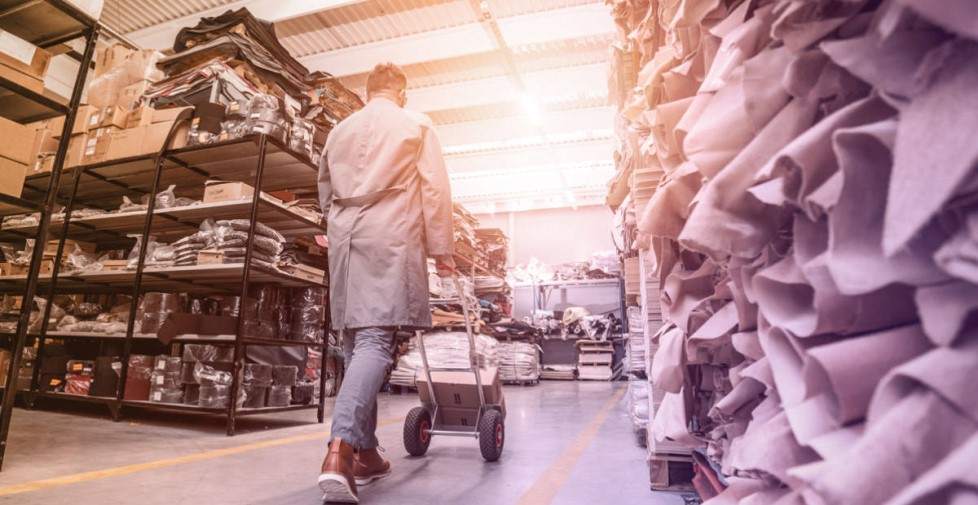 job in the tanning industry The social and environmental report from 2020 showed that the employees are happy to stay extended service. In addition, the figures published by the professional associations show that safety (work accidents, occupational diseases) is at the low level of comparable industries.
job in the tanning industry The social and environmental report from 2020 showed that the employees are happy to stay extended service. In addition, the figures published by the professional associations show that safety (work accidents, occupational diseases) is at the low level of comparable industries.
Research and development work for sustainable leather production
In close cooperation with the chemical auxiliary's industry, our members continuously strive for further advances in the field of leather production As a member of the Leather Research Association, we promote joint pre-competitive research projects and studies for the further development of the use of leather and production-integrated environmental protection.
Initial and continuing education in the leather industry
Leather is a unique natural product: soft, supple but also tough, and hard-wearing. Handmade leather comes in various shapes and colors, can be used in various ways and is just as popular in our modern, high-tech world as it was thousands of years ago. Depending on the type of raw material and the technology selected, the dermis, the part of the hides, and skins that can be used for leather purposes can produce different types of leather, such as firm sole leather and sturdy shoe upper leather or cloth-soft glove leather. Leather can be processed into shoes and clothing, bag makers, upholstery covers for furniture and car seats, and many other commodities. 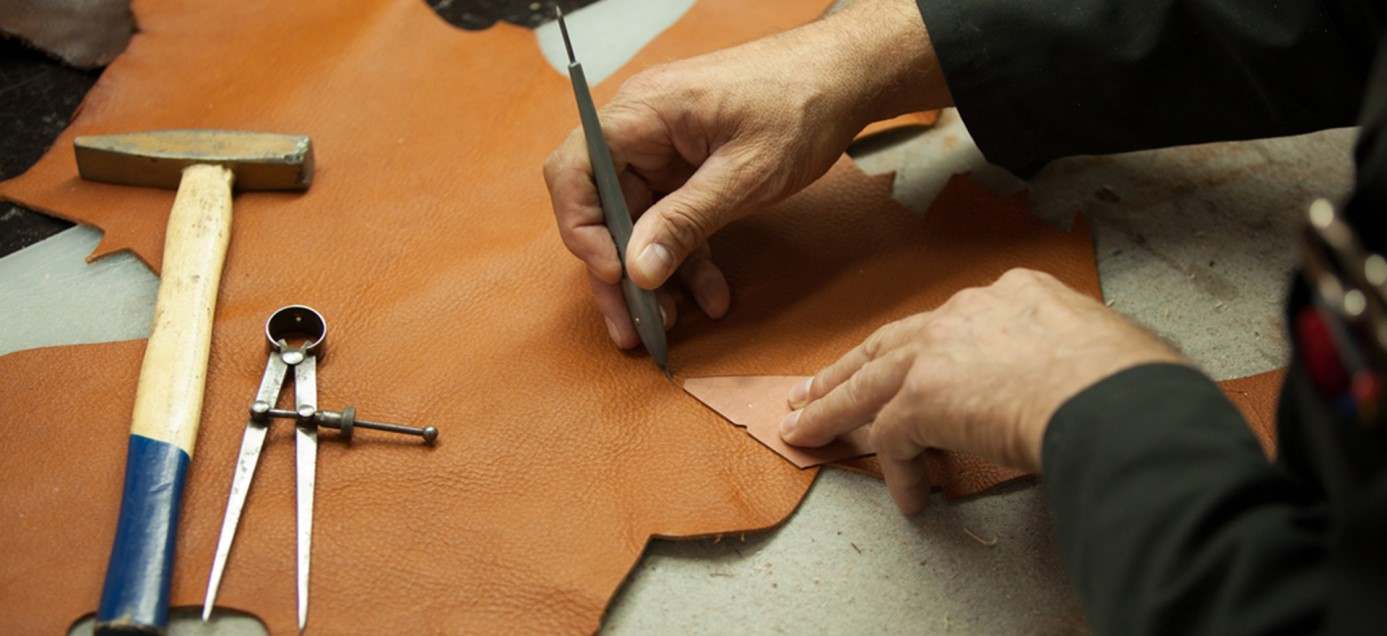 Its clothing-physiological advantages, namely the ability to store moisture up to 30% of its weight while maintaining a dry handle and to let water vapor through thanks to its porosity breathability, its high mechanical strength, and its aesthetic surface and handle design, justify a utility value that is still used today despite intensive research, also on substitutes, has not been achieved by any synthetic or any other natural material. This requires well-trained tanners, and today referred to as "skilled workers for leather production and tanning technology". It is only through their work that the unique product LEATHER is made from the hides and skins of farm animals. From rawhide to leather Leather production is a diverse and complicated finishing process. A hide or skin has to go through about 40 processing stages before the natural product leather is made from the biological raw material. A leather that meets both the requirements of the processor and the diverse and fashionable desires of the consumer. In spite of modern tanning processes, it still takes several weeks to transform the perishable raw material into stable, salable leather. Some special leathers, such as the purely vegetable-tanned sole leather, are still manufactured today using traditional pit tanning processes, which take many months, in order to meet the demands for high resilience. Leather production is therefore very complex and requires a lot of expertise and experience in tanning. A complex manufacturing process in around 40 stages At the beginning of leather production, there is the preparation of the skin for tanning. The first step is a cleaning stage of the dirty animal skins, some of which are preserved with common salt. The hides are then stripped of all parts that cannot be converted into leather.
Its clothing-physiological advantages, namely the ability to store moisture up to 30% of its weight while maintaining a dry handle and to let water vapor through thanks to its porosity breathability, its high mechanical strength, and its aesthetic surface and handle design, justify a utility value that is still used today despite intensive research, also on substitutes, has not been achieved by any synthetic or any other natural material. This requires well-trained tanners, and today referred to as "skilled workers for leather production and tanning technology". It is only through their work that the unique product LEATHER is made from the hides and skins of farm animals. From rawhide to leather Leather production is a diverse and complicated finishing process. A hide or skin has to go through about 40 processing stages before the natural product leather is made from the biological raw material. A leather that meets both the requirements of the processor and the diverse and fashionable desires of the consumer. In spite of modern tanning processes, it still takes several weeks to transform the perishable raw material into stable, salable leather. Some special leathers, such as the purely vegetable-tanned sole leather, are still manufactured today using traditional pit tanning processes, which take many months, in order to meet the demands for high resilience. Leather production is therefore very complex and requires a lot of expertise and experience in tanning. A complex manufacturing process in around 40 stages At the beginning of leather production, there is the preparation of the skin for tanning. The first step is a cleaning stage of the dirty animal skins, some of which are preserved with common salt. The hides are then stripped of all parts that cannot be converted into leather.  The skins are depilated, the subcutaneous connective tissue is mechanically removed and the non-collagenous proteins and fatty substances are dissolved in various treatment baths. All water processes take place in huge rotating barrels The splitting of the skin into the hair-side “grain gap” for smooth leather types and the body-side “flesh gap” for rough suede leather also takes place during this preparatory work. At the end of this complex process, there is the “naked” skin, the so-called pelt, ready for tanning. The tannable pelt chemically consists solely of the main component of a hide that can be converted into leather, collagen: a fibrous connective tissue protein whose molecules are tightly woven into an infinite three-dimensional fiber network that is ultimately responsible for the many natural properties of the leather, especially its durability. The tanning Depending on the desired leather quality, the appropriate tanning agents are then allowed to act on this collagen in the subsequent actual tanning, which react with the collagen in the aqueous environment to form leather, which, in contrast to the original skin, is now resistant to rot and heat stress and can be stored and used is transportable. Which tanning method is used depends on the later use of the leather, e.g. B. intended as a shoe or furniture leather, for leather clothing or car interiors. While only vegetable tanning with plant extracts from chestnut, oak, or mimosa can be used for abrasion-resistant shoe soles, mineral chrome tanning is the tanning method of choice for upholstery, upper or fine leather. Chrome-free tanned leather is also available on request. The re-tanning In the subsequent wet finishing processes, the final character of the leather is determined with the help of vegetable, synthetic or mineral re-tanning agents. This gives the leather a better and more even fullness and further technical quality improvements.
The skins are depilated, the subcutaneous connective tissue is mechanically removed and the non-collagenous proteins and fatty substances are dissolved in various treatment baths. All water processes take place in huge rotating barrels The splitting of the skin into the hair-side “grain gap” for smooth leather types and the body-side “flesh gap” for rough suede leather also takes place during this preparatory work. At the end of this complex process, there is the “naked” skin, the so-called pelt, ready for tanning. The tannable pelt chemically consists solely of the main component of a hide that can be converted into leather, collagen: a fibrous connective tissue protein whose molecules are tightly woven into an infinite three-dimensional fiber network that is ultimately responsible for the many natural properties of the leather, especially its durability. The tanning Depending on the desired leather quality, the appropriate tanning agents are then allowed to act on this collagen in the subsequent actual tanning, which react with the collagen in the aqueous environment to form leather, which, in contrast to the original skin, is now resistant to rot and heat stress and can be stored and used is transportable. Which tanning method is used depends on the later use of the leather, e.g. B. intended as a shoe or furniture leather, for leather clothing or car interiors. While only vegetable tanning with plant extracts from chestnut, oak, or mimosa can be used for abrasion-resistant shoe soles, mineral chrome tanning is the tanning method of choice for upholstery, upper or fine leather. Chrome-free tanned leather is also available on request. The re-tanning In the subsequent wet finishing processes, the final character of the leather is determined with the help of vegetable, synthetic or mineral re-tanning agents. This gives the leather a better and more even fullness and further technical quality improvements.  This is followed by coloring, greasing for suppleness, and mechanical loosening of the fiber structure in order to fix certain properties such as elasticity or softness and, if necessary, hydrophobic impregnation. The dressing After all this preparatory work, the leather enters the last manufacturing process, the so-called dry finish. This is a collective term for a series of mechanical and chemical treatments of the leather surface. In particular, the optical and fashionable characteristics of the leather are adjusted here. But quality factors such as high light fastness and rubbing fastness (color stability) can still be significantly optimized in finishing During the finishing process, the different types of leather are also given their typical characteristics, e.g. B. the velvety soft sanded nubuck leather. Printing or embossing creates different patterns or attractive surfaces on the leather. In short: the leather gets “its final look and the finishing touch” in the dressing – as the tanner says. protection of species The Washington Convention on International Trade in Endangered Species : The stocks of many wild animal and plant species are threatened by international trade. CITES has regulated trade in these endangered animals and plants and their products since 1975. Which species are protected is determined by the member states at the conferences, currently, there are more than 37,000. The leather that our members produce is based on the hides and skins of livestock, i.e. cattle, sheep and goats. However, there are also tanneries that process the skins of kangaroos or yaks. And there are tanneries that process skins and skins from other species, such as the skins of zoo animals.
This is followed by coloring, greasing for suppleness, and mechanical loosening of the fiber structure in order to fix certain properties such as elasticity or softness and, if necessary, hydrophobic impregnation. The dressing After all this preparatory work, the leather enters the last manufacturing process, the so-called dry finish. This is a collective term for a series of mechanical and chemical treatments of the leather surface. In particular, the optical and fashionable characteristics of the leather are adjusted here. But quality factors such as high light fastness and rubbing fastness (color stability) can still be significantly optimized in finishing During the finishing process, the different types of leather are also given their typical characteristics, e.g. B. the velvety soft sanded nubuck leather. Printing or embossing creates different patterns or attractive surfaces on the leather. In short: the leather gets “its final look and the finishing touch” in the dressing – as the tanner says. protection of species The Washington Convention on International Trade in Endangered Species : The stocks of many wild animal and plant species are threatened by international trade. CITES has regulated trade in these endangered animals and plants and their products since 1975. Which species are protected is determined by the member states at the conferences, currently, there are more than 37,000. The leather that our members produce is based on the hides and skins of livestock, i.e. cattle, sheep and goats. However, there are also tanneries that process the skins of kangaroos or yaks. And there are tanneries that process skins and skins from other species, such as the skins of zoo animals. 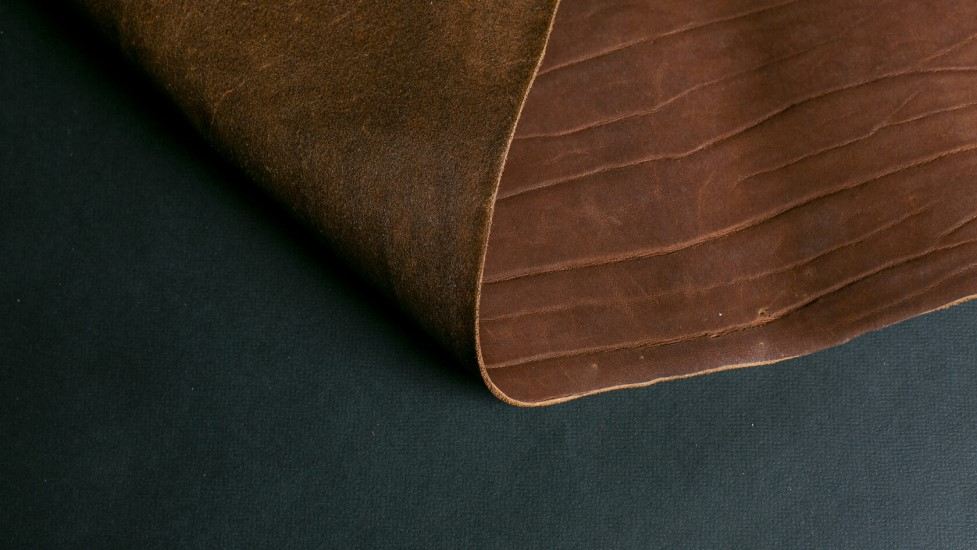 One quickly becomes unsure of what is permissible and what is not. Some animal rights organizations help animal and species protection here. Others confuse with their actions and give the impression that almost everything is forbidden. Protection of species: The question that arises very quickly: Is it allowed to do that? The hides and skins of protected species are subject to many regulations. That's a good thing. You can find more details here:
One quickly becomes unsure of what is permissible and what is not. Some animal rights organizations help animal and species protection here. Others confuse with their actions and give the impression that almost everything is forbidden. Protection of species: The question that arises very quickly: Is it allowed to do that? The hides and skins of protected species are subject to many regulations. That's a good thing. You can find more details here:
The International Reptile Leather Association (IRV)
Since it was founded in 1972, the International Reptile Leather Association e.V. Offenbach has been involved with solutions for an efficient identification method in terms of species protection. After several years of development work, pioneering work was presented with the species protection flag, which was and is highly recognized in specialist circles. The sponsor of the labeling system for reptile brown leather is the non-profit association Reptilartenschutz e.V., founded in 1985, whose members include leading leather suppliers and leather goods manufacturers as well as leather processors and the subsequent retail traders that deal with exotic leather. The labeling system for reptile leather goods with the species protection flag, which has been recognized by the federal authorities since 1987 as proof of legality for goods that are in accordance with species protection law, has proven itself in practice as a reliable alternative to the CITES proof regulation.
